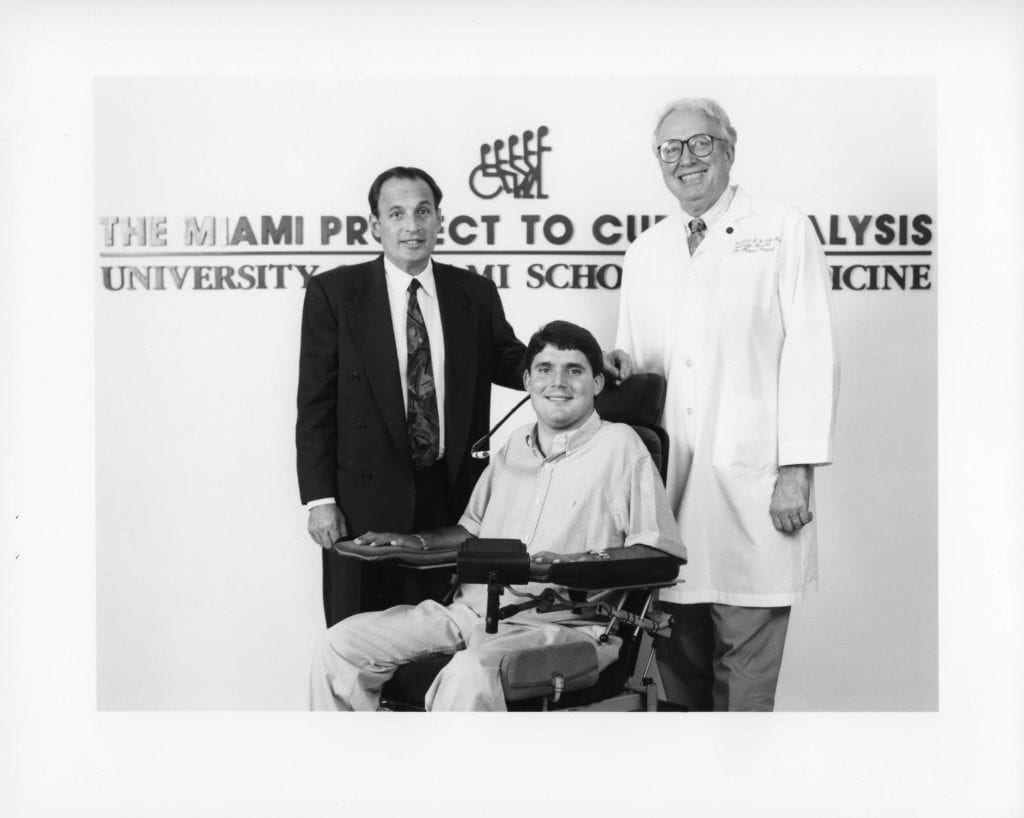HISTORY OF THE MIAMI PROJECT

The Miami Project was co-founded in 1985 by internationally recognized spinal cord injury (SCI) expert, Barth A. Green, M.D. and three families who had experienced SCI firsthand.
Business people Don Misner and Beth Roscoe were early supporters of Green’s efforts. Joining them following the injury of his son, Marc, was NFL Hall of Fame linebacker Nick Buoniconti. The Buoniconti family vowed that progress in research would not be slowed because of a lack of funds. Their fundraising efforts brought an unprecedented level of public awareness of the need for SCI research.
The founders envisioned that to find a cure for paralysis, we needed to gather a committed group of scientists from various clinical and scientific disciplines in one center. Out of this vision, The Miami Project to Cure Paralysis was born.
The Miami Project’s first scientific director, Åke Seiger, M.D., fostered collaboration among researchers already working at the University of Miami School of Medicine. He also recruited several young scientists to add to the fledgling Miami Project team.
Richard P. Bunge, M.D., a basic scientist known internationally for his pioneering studies of nerve growth and myelination, led The Miami Project from 1988 until 1996. During this period, The Miami Project research team doubled in size and established its scientific reputation.
From 1997 to today, W. Dalton Dietrich, Ph.D. has led The Miami Project team with the goal of accelerating the translation of new laboratory findings to clinical studies involving humans.
Since its inception, a goal of The Miami Project has been to increase the number of laboratories undertaking SCI research by recruiting the premier scientists to the field, and by training students who will establish new research laboratories throughout the world. Today, The Miami Project serves as a model for other institutions that are developing centers for SCI research.
